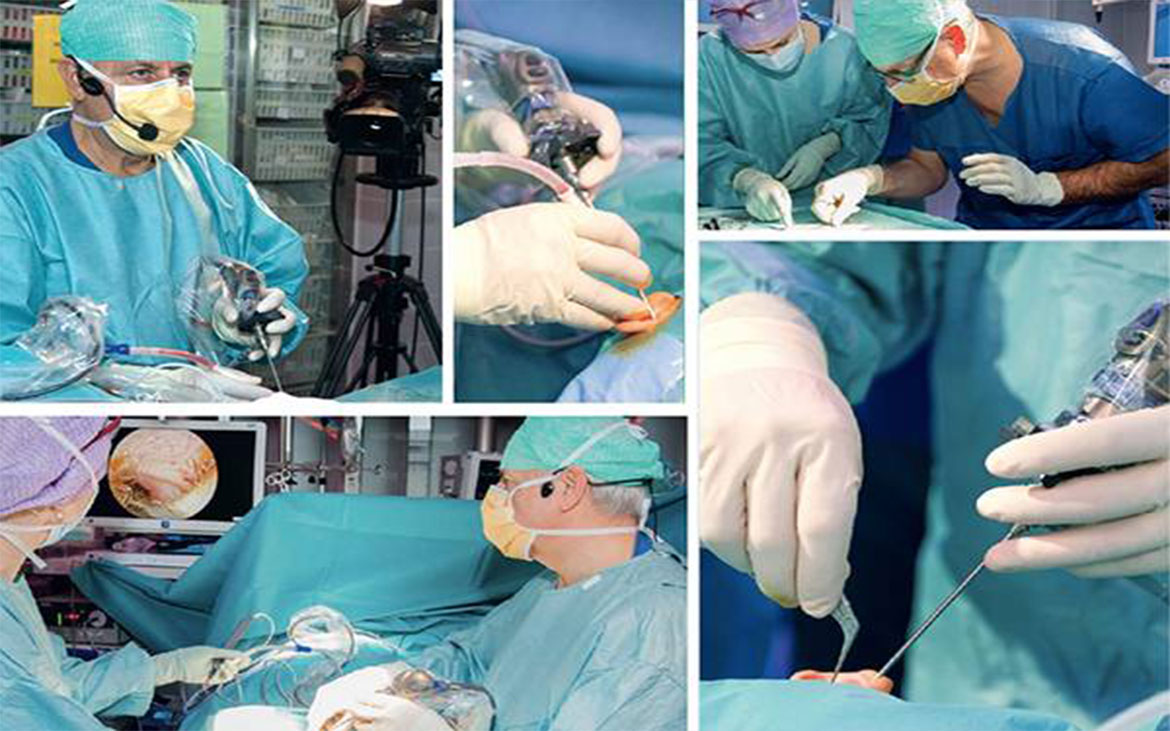Breast reduction surgery, also known as reduction Breast Cosmetic Surgery, is a procedure used to remove excess fat, tissue and skin from the breasts. If you have large breasts, you might choose to have breast reduction surgery to ease discomfort or to achieve a breast size proportionate to your body.
Breast reduction surgery might also help improve your self-image and your ability to participate in physical activities.
If you're considering breast reduction surgery, consult a board-certified plastic surgeon. It's important to understand what breast reduction surgery entails — including possible risks and complications — as well as set realistic expectations.
Why it's done
Breast reduction surgery is meant for women who have large breasts and want to resolve issues such as:
Chronic back, neck and shoulder pain that requires pain medications
Chronic rash or skin irritation under the breasts
Nerve pain
Restricted activity
Poor self-image related to large breasts
Difficulty fitting into bras and clothing
Breast reduction surgery generally isn't recommended if you:
Smoke
Have certain conditions such as diabetes or heart problems
Are very obese
Want to avoid scars on your breasts
You can have breast reduction surgery at any age — sometimes even as a teenager. But if your breasts aren't yet fully developed, you might need a second surgery later in life.
You might postpone breast reduction surgery if you have certain future plans, such as:
Childbirth. If you haven't started a family or your family isn't yet complete, you might wait until pregnancy isn't an issue. Breast-feeding might be challenging after breast reduction surgery — although certain surgical techniques can help preserve your ability to breast-feed.
Weight loss. If you are interested in losing weight by changing your diet and starting an exercise program, you might wait to decide if reduction Breast Cosmetic Surgery is for you. Losing weight can often result in changes to your breast size.
Request an Appointment at Mayo Clinic
Risks
Breast reduction surgery has the same risks as any other type of major surgery — bleeding, infection and an adverse reaction to the anesthesia. Other possible risks include:
Bruising, which is usually temporary
Scarring
Removal of or loss of sensation in the nipples and skin surrounding the nipples (areolae)
Difficulty or inability to breast-feed
Differences in the size, shape and symmetry of the surgically altered left and right breasts, which might lead to further surgery to improve your appearance
How you prepare
Your plastic surgeon will likely:
Evaluate your medical history and overall health
Discuss your expectations for breast size and appearance after the surgery
Provide a detailed description of the procedure and its risks and benefits, including likely scarring and possible loss of sensation
Examine and measure your breasts
Take photographs of your breasts for your medical record
Explain the type of anesthesia used during surgery
Before breast reduction surgery, you might also be asked to:
Complete various lab tests
Get a baseline mammogram
Stop smoking for a certain period of time before and after surgery
Avoid taking aspirin, anti-inflammatory drugs and herbal supplements, to control bleeding during surgery
Ask your surgeon whether you'll be able to go home the day of the surgery or whether you'll need to spend a night in the hospital. Arrange for someone to drive you home after surgery or when you leave the hospital.
What you can expect
Breast reduction surgery is usually done under general anesthesia, either in a hospital or outpatient surgical facility.
During the procedure
The specific technique used to reduce the size of your breasts can vary. The procedure might include:
Surgery through incisions
Liposuction to remove the excess fat in your breasts
The surgeon usually:
Makes an incision around the area and down each breast
Removes excess breast tissue, fat and skin to reduce the size of each breast
Reshapes the breast and reposition the nipple and area
The nipple:
Usually remain attached to the breast
Might need to be removed and then reattached at a higher position as a skin graft if your breasts are very large
Your surgeon will try to achieve symmetry between your breasts, but some variation in breast size and shape might occur. The size of the area also might be reduced. Your incision scars might fade over time but will never completely disappear.
After the procedure
Immediately after surgery:
Your breasts will be covered with a gauze dressing or bandages
A tube might be placed under each arm to drain any excess blood or fluid
You likely will take medication for pain and antibiotics, to decrease your risk of infection
For the first days or week after surgery:
Your breasts will probably feel tender and sensitive
Your breasts might be swollen and bruised
Your surgeon might recommend an elastic compression bra to protect the breasts
After that:
You'll need to limit physical activity for two to four weeks while the breasts heal
Your surgeon might suggest avoiding underwire bras for a few months after surgery
Scarring usually fades over time. You will need a follow-up visit with your surgeon to remove stitches and check your recovery.
Results
Incisions made for breast reduction surgery
Incisions made for breast reduction surgery
Successful breast reduction surgery can relieve pain in your upper back, neck and shoulders. It might also increase your ability to participate in physical activities and promote a more positive self-image.
Although you'll see results immediately, remember that it can take months for the swelling to completely go down and the surgical scars to fade. The final result is generally permanent — although breast shape and size can change due to factors such as aging and weight gain or loss
Cosmetic Surgery
